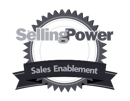
Are You Forcing Your Customers to Drive Multiple Cars At The Same Time?
I was in Italy recently for my birthday. It was a big birthday for me, and I celebrated by inviting my extended family to come with me. This meant I needed to hire not only a car for myself (a BMW M4 cab,) but also two vans to accommodate the larger group.
Because I booked all of the expenses in advance, when we arrived at the car rental place, my name was on all of the reservations. We explained to the agent that different members of the family would drive the two vans.
They told us that we’d need to pay an additional fee for each additional driver, each day. We explained that each vehicle would still only have one driver, but that each one would have a different driver. Since, obviously, I would not be driving all three cars at the same time.
They explained that it is their policy to charge an extra fee for any driver other than the one on the reservation form. Again, we explained that although I had reserved for the three cars, I was only planning to drive one. It seemed to me that this must be obvious, but they insisted that their policy is their policy, and there was nothing they could do.
I ended up paying the extra fees.
It left a pretty bad taste in my mouth. And it got me thinking about the ways that we, in the software industry, sometimes force our customers to drive multiple cars at the same time.
We Increase Cost Without Increasing Value
The essential problem with the rental car agency is that they wanted to charge me more without increasing the value of their offering. I would have gladly paid extra if I’d felt I was getting something extra. It was about celebrating my birthday, after all!
But, three cars with one driver is not a good cost-to-value ratio. Neither is charging for the extra drivers necessary to drive the cars that have already been paid for.
Aim to align your price with value at every stage of the customer relationship.
This misalignment of cost with value often happens when companies start scrambling to compete on cost rather than value. Look at how some airlines compete based on quoting the absolute lowest fare. Then, they add on luggage fees, meal fees, and much more until eventually, their cost is the same, or higher, than that of an airline that charges more for the fare but includes all the “extras” that the low-fare airline charges for.
In the software industry, it’s not uncommon for commoditized SaaS companies to start racing to offer the lowest possible price up front, with a strategy to lock customers in and then charge for things the customers thought were included to begin with.
For instance, at Membrain we often hear that buyers say our baseline pricing is too high and “Salesforce is cheaper.” But then companies get in with Salesforce and discover that their advertised pricing is for a very basic model that provides very little functionality, and so the customer is forced to pay more and more add-on fees and customizations just to get what they thought they were buying in the first place.
By the time they add on the plug-ins, upgrades and custom coding to get Salesforce to do what Membrain does out of the box, they’re spending multiples per seat of what a seat on Membrain costs.
Hubspot is another example of a company that charges extra without adding value when you reach your cap on the number of contacts. We learned this the hard way when we hit the top of our contacts count for the first time and realized that, to save money, we would have to cut contacts. But there was no easy way to segment our audiences well enough to know which contacts to cut, so we were stuck simply upgrading, even though many of those contacts may never become customers.
I’m also seeing a lot of repetitive uses for AI on multiple platforms. With almost every software company adding some version of AI assistants to their platform, there is bound to be a lot of areas of overlap. This ends up costing customers as they duplicate functions across platforms, paying for each instance separately, like paying extra to drive multiple cars at the same time.
You Can Choose to Do It Differently
One infamous example of cost misaligning with value is airport food. Because airport restaurants cater to a trapped audience, they often feature expensive, poor-quality food. People only eat there because they are stuck in the airport and they’re hungry.
Recently, though, a new restaurant opened at the Stockholm Airport called La Girafe. This restaurant actually has really good food at prices that are aligned with the quality of the food. Now, instead of dreading airport food, people can look forward to traveling through the Stockholm Airport for the experience of eating there.
They chose to do it differently, and you can too.
At Membrain, we charge a simple, clear rate for each seat on our platform, with simple, clearly defined roles so you can purchase exactly the level of functionality you need for each person on your team.
But of course, we want to make more money for the value we bring, but our philosophy is that customers’ prices should grow with us as they grow, and that each new cost to them comes with a commensurate level of value.
We never charge extra just because we can.
We work with our customers to ensure their success on our platform; then, we help them find ways we can help them be even more successful. And we only add cost when adding value that they agree is worth the extra.
In other words, we aim to align our cost with our value at every stage of the relationship.
How to Increase Revenue Without Leaving A Bad Taste In Customers’ Mouths
You can charge more for your product and upsell them on add-ons without leaving a bad taste in their mouth. Here are three ways.
- Be honest and transparent about your costs
Companies like Salesforce like to offer a low entry cost to get you in the door, then add on lots of additional costs and fees. To avoid alienating customers, be upfront about what is included in your base cost and what it costs to upgrade to each new level. - Keep it simple
Another tactic that companies like Salesforce use to increase your costs is they use complicated language, too many options, and intricate contract language to hide the true cost. They’ll later tell you it was in the contract you signed, but they won’t tell you it’s in the contract when you sign it. To do things differently, keep your tiers simple and clear, and make sure your customers understand the key points of the contracts they sign, before they sign them. - Align price increases with value
If you’re going to charge a customer extra for something, make sure it’s something that’s worth it to them. Nobody wants to pay extra for something they thought was included, or that isn’t worth a lot to them, or that is a repeat of something else they already have. Instead, focus on identifying what is actually valuable to your customers and only charge more when you’re offering them something that is equal or greater in value to them.
Successful companies usually must find ways to increase the money their customers spend with them. But there are better and worse ways to do it. At Membrain, we have always been committed to challenging the mainstream, and that is true here as well. We choose to do it differently and only charge you more when it’s worth it. What about you? Does your company force customers to drive multiple cars, or are you committed to aligning price increases with value?

By George Brontén
George is the founder & CEO of Membrain, the Sales Enablement CRM that makes it easy to execute your sales strategy. A life-long entrepreneur with 20 years of experience in the software space and a passion for sales and marketing. With the life motto "Don't settle for mainstream", he is always looking for new ways to achieve improved business results using innovative software, skills, and processes. George is also the author of the book Stop Killing Deals and the host of the Stop Killing Deals webinar and podcast series.
Find out more about George Brontén on LinkedIn







